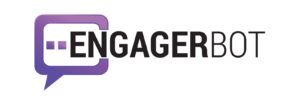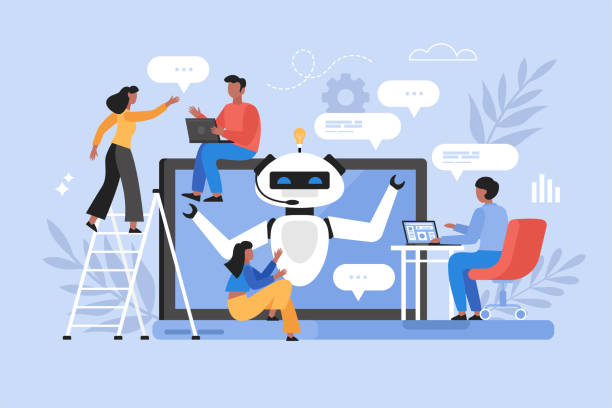Chatbot marketing is the use of artificial intelligence (AI) powered chatbots to interact with website visitors, customers, and potential leads. These chatbots are designed to simulate human conversation and provide personalized experiences to users. They can be integrated into various platforms such as websites, social media platforms, and messaging apps to provide real-time responses and assistance.
The main goal of chatbot marketing is to enhance customer engagement and increase conversions. By leveraging the power of AI, businesses can create interactive and conversational experiences that resonate with their target audience. Chatbots can answer frequently asked questions, provide product recommendations, and even assist with customer support queries.
One of the key advantages of chatbot marketing is its ability to generate leads. By engaging website visitors in a conversation, chatbots can collect valuable information such as email addresses, preferences, and purchase history. This data can then be used to nurture leads and drive them towards making a purchase.
Moreover, chatbots can also improve the overall customer experience. With their 24/7 availability, chatbots ensure that customers can access information and assistance whenever they need it. This not only enhances customer satisfaction but also helps businesses build a positive brand image.
Chatbot marketing also plays a crucial role in increasing a website’s conversion rate. By providing personalized recommendations and guiding users through the sales funnel, chatbots can significantly improve conversion rates. They can also offer special discounts or promotions to entice users to make a purchase.
Benefits of Using Chatbots for Marketing
Chatbots have become an essential tool in the world of marketing, revolutionizing the way businesses interact with their customers. In this subchapter, we will explore the numerous benefits that chatbots bring to marketing strategies and how they can improve user engagement and conversions.
One of the key advantages of using chatbots for marketing is their ability to provide instant and personalized customer support. With chatbots, businesses can deliver 24/7 customer service, responding to inquiries and resolving issues in real-time. This not only enhances customer satisfaction but also builds trust and loyalty, leading to increased conversions and repeat sales.
Chatbots are also highly effective in lead generation and nurturing. By engaging with website visitors in a conversational manner, chatbots can gather valuable information about potential customers. They can qualify leads based on their preferences, behavior, and purchase history, enabling businesses to target their marketing efforts to the right audience. This improves the efficiency and effectiveness of marketing campaigns, resulting in higher conversion rates and more sales.
Furthermore, chatbots can enhance the overall user experience on a website. By providing instant and relevant information, they can guide visitors through the sales funnel, assisting them in making informed purchasing decisions. Chatbots can offer personalized recommendations, suggest upsells and cross-sells, and even provide support during the checkout process. This level of engagement not only increases customer satisfaction but also boosts the website’s conversion rate.
Another benefit of chatbot marketing is their ability to generate valuable customer insights. Through data collection and analysis, chatbots can identify patterns, trends, and customer preferences. This information can be used to refine marketing strategies, tailor product offerings, and improve customer targeting. By understanding their target market better, businesses can create more impactful and personalized marketing campaigns, leading to higher engagement and conversions.
Overview of Automation in Marketing
Automation has become an essential tool in the field of marketing, revolutionizing the way businesses engage with their target audience and drive conversions. In this subchapter, we will explore the vast capabilities of automation in marketing, specifically focusing on chatbot marketing.
Chatbot marketing, powered by artificial intelligence and automation, has emerged as a game-changer in the digital marketing landscape. It enables businesses to engage with website visitors, generate leads, and enhance sales in a highly personalized and efficient manner.
One of the key benefits of automation in marketing is its ability to handle customer inquiries and provide instant support. Chatbots can be programmed to answer frequently asked questions, offer product recommendations, and resolve issues, freeing up valuable time for customer service teams. This ensures round-the-clock availability, leading to increased customer satisfaction.
Moreover, chatbots can engage site visitors by initiating conversations based on their behavior and preferences. By leveraging conversational advertising techniques, businesses can deliver tailored messages and offers to their target customers, effectively capturing their attention and driving conversions. With automation, these interactions can be seamlessly integrated into the customer journey, delivering a personalized and interactive experience.
Automation in marketing also plays a critical role in lead generation. Chatbots can collect valuable information from website visitors, such as their contact details and preferences, and qualify them as ideal potential customers. This data can then be seamlessly integrated with marketing automation tools, allowing businesses to nurture leads and guide them through the sales funnel.
Furthermore, automation enables businesses to analyze and optimize their marketing efforts effectively. By tracking and measuring key performance indicators, such as conversion rates and engagement metrics, marketers can gain valuable insights into the effectiveness of their chatbot marketing campaigns. This data-driven approach allows for continuous improvement and better decision-making.
Understanding User Engagement and Conversions
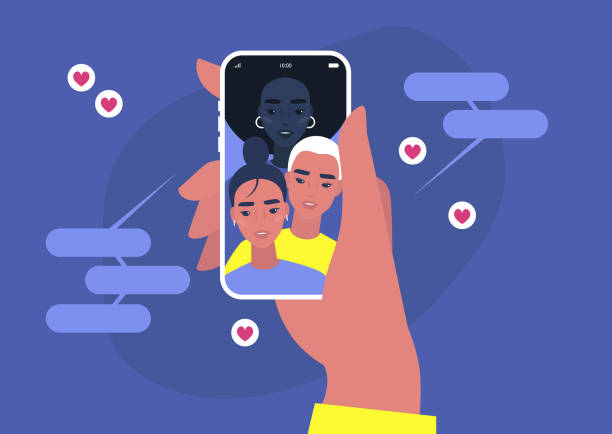
The Importance of User Engagement and Conversions
In today’s digital age, businesses are constantly striving to engage their users and increase conversions. With the rise of chatbot marketing, this has become even more crucial. In this subchapter, we will explore the importance of user engagement and conversions and how chatbots can play a pivotal role in achieving success in these areas.
User engagement is all about creating a meaningful interaction between the user and the brand. It goes beyond just attracting visitors to a website or app – it’s about keeping them engaged and interested in what you have to offer. When users are engaged, they are more likely to spend time on your site, explore your products or services, and ultimately convert into paying customers.
Conversions, on the other hand, are the ultimate goal of any business. Whether it’s making a sale, capturing leads, or driving website sign-ups, conversions are the lifeblood of success. Increasing conversion rates means more revenue, more leads, and ultimately more growth for your business.
So, how can chatbots help in improving user engagement and conversions? Well, chatbots have revolutionized the way businesses interact with their customers. They provide a personalized, conversational experience that engages users and keeps them coming back for more.
One of the key benefits of chatbots is their ability to provide instant support and assistance. Whether it’s answering customer inquiries, providing product recommendations, or helping with troubleshooting, chatbots are available 24/7 to assist users. This not only enhances customer service but also increases user engagement by providing a seamless and efficient experience.
Furthermore, chatbots can play a crucial role in lead generation and sales. By engaging with website visitors and guiding them through the sales funnel, chatbots can collect valuable information and qualify leads. They can also provide personalized recommendations and offers based on user preferences, increasing the chances of conversion.
Moreover, chatbots can enhance the website’s conversion rate by providing interactive and engaging experiences. They can offer personalized product suggestions, showcase special promotions, and even provide real-time customer testimonials. All these features make the user experience more enjoyable and increase the likelihood of conversion.
Key Metrics for Measuring User Engagement
In today’s digital age, user engagement has become a crucial aspect of any successful marketing strategy. And with the rise of chatbot marketing, businesses now have a powerful tool to drive user engagement and conversions. But how do you measure the effectiveness of your chatbot in engaging users? This subchapter will delve into the key metrics that can help you gauge user engagement and optimize your chatbot marketing efforts.
- Conversation Completion Rate: This metric measures the percentage of conversations initiated by users that are successfully completed with the chatbot. A high completion rate indicates that users find value in the chatbot, stay engaged throughout the conversation, and are more likely to convert.
- Response Time: The response time metric measures how quickly the chatbot provides a response to user inquiries. A fast response time is essential to keep users engaged and prevent them from losing interest or seeking assistance elsewhere.
- Click-Through Rate (CTR): The CTR metric measures the percentage of users who click on the chatbot’s suggested actions or links. A high CTR indicates that the chatbot is effectively guiding users towards desired actions, such as signing up for a newsletter, making a purchase, or scheduling a service.
- User Retention Rate: This metric evaluates how many users continue to engage with the chatbot over time. A high retention rate indicates that users find value in the chatbot and are likely to become repeat customers.
- Feedback and Ratings: Monitoring user feedback and ratings can provide valuable insights into user satisfaction, preferences, and areas for improvement. Positive feedback and high ratings indicate that the chatbot is effectively engaging users, while negative feedback can help identify pain points and optimize the user experience.
- Conversion Rate: Ultimately, the success of your chatbot marketing efforts can be measured by the conversion rate. This metric tracks the percentage of users who complete a desired action, such as making a purchase or submitting a lead form. A high conversion rate signifies that the chatbot is effectively engaging and persuading users to take the desired action.
By monitoring these key metrics, you can continuously evaluate the effectiveness of your chatbot marketing strategy and make data-driven decisions to optimize user engagement and conversions. Remember, user engagement is not just about providing information or assistance; it’s about creating personalized and interactive experiences that resonate with your target audience.
Strategies for Increasing Conversions
In today’s fast-paced digital world, it’s crucial for businesses to find effective strategies to increase conversions and boost their bottom line. One powerful tool that has emerged in recent years is chatbot marketing. In this subchapter, we will explore various strategies for leveraging chatbots to enhance user engagement and conversions.
1. Personalize User Experience
One of the key benefits of chatbot marketing is the ability to provide personalized experiences to users. By gathering data about their preferences, behaviors, and past interactions, chatbots can deliver tailored recommendations, promotions, and content. This personalized approach increases user engagement and encourages conversions by offering relevant solutions to their specific needs.
2. Proactive Engagement
Chatbots can be programmed to initiate conversations with website visitors, prompting them to engage with your brand. By using proactive messages and offering assistance, chatbots can capture the attention of potential customers and guide them through the conversion funnel. This strategy helps to increase user engagement and conversions by providing immediate support and addressing any concerns or questions.
3. Lead Generation
Chatbots can play a vital role in generating leads for your business. By collecting contact information from users during conversations, chatbots can help build a database of potential customers. This information can then be used for targeted marketing campaigns, increasing the chances of converting leads into sales. Integrating chatbots with lead generation tools and CRM systems can streamline the process and maximize results.
4. Streamline Customer Support
Chatbots can provide quick and efficient customer support, ensuring that users have a positive experience with your brand. By addressing frequently asked questions, resolving issues, and providing instant responses, chatbots enhance customer satisfaction and increase the likelihood of conversions. Additionally, chatbots can offer personalized recommendations and upsell opportunities, further boosting conversions.
5. Test and Optimize
To maximize the effectiveness of chatbot marketing, it’s essential to continuously test and optimize your strategies. Analyze user interactions, conversion rates, and feedback to identify areas for improvement. Experiment with different messaging, call-to-actions, and chatbot flows to find what resonates best with your target audience. By regularly monitoring and refining your chatbot marketing efforts, you can fine-tune your approach and achieve higher conversion rates.
The Role of Chatbots in Enhancing User Engagement
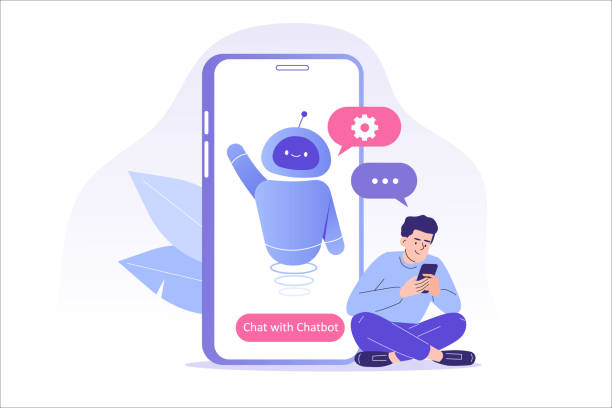
How Chatbots Improve User Engagement
Chatbots have emerged as a powerful tool in the world of marketing and customer support, revolutionizing the way businesses interact with their audience. These intelligent virtual assistants are designed to simulate human conversation and provide instant responses to customer inquiries, making them an essential component of any successful digital marketing strategy.
One of the key benefits of using chatbots is their ability to significantly improve user engagement. By integrating chatbots into your website or messaging platforms, you can create a seamless and personalized experience for your target audience.
Here’s how chatbots can help enhance user engagement:
- Instant and Personalized Responses: Chatbots are available 24/7, providing instant responses to customer inquiries. This ensures that your audience gets the information they need without any delays, improving their overall experience. Moreover, chatbots can gather user data and personalize responses based on individual preferences, making the interaction more engaging and relevant.
- Interactive Conversations: Chatbots are designed to engage users in interactive conversations, mimicking human-like interactions. They can ask questions, provide recommendations, and even offer personalized offers or promotions based on user preferences. This interactive approach keeps users engaged and encourages them to stay longer on your website or messaging platform.
- Proactive Engagement: Chatbots can initiate conversations with website visitors or messaging platform users, proactively engaging them and offering assistance. This proactive approach helps capture the attention of your target audience, increasing the likelihood of conversion and improving user engagement.
- Round-the-Clock Support: With chatbots, you can offer round-the-clock customer support without the need for human intervention. This ensures that your audience can reach out to you at any time, leading to increased customer satisfaction and improved engagement.
- Data Collection and Analysis: Chatbots can collect valuable user data during conversations, including preferences, interests, and purchase history. This data can be analyzed to gain insights into user behavior, allowing you to tailor your marketing strategies and improve user engagement further.
Using Chatbots to Personalize User Experience
In today’s digital age, personalization is key to successful marketing strategies. Users are constantly bombarded with generic content, making it increasingly important for businesses to stand out and provide a more tailored experience. This is where chatbots come into play, revolutionizing the way companies interact with their customers and enhancing user engagement and conversions.
Chatbot marketing is a powerful tool that allows businesses to automate processes, save time, and provide personalized experiences to their target audience. By leveraging artificial intelligence and automation, chatbots can gather data, analyze user preferences, and deliver customized recommendations and solutions.
One of the primary benefits of using chatbots is their ability to engage customers in real-time conversations. Unlike traditional marketing methods, chatbots provide an interactive and conversational experience, making users feel heard and valued. By understanding user preferences and past interactions, chatbots can offer personalized recommendations, promotions, and support, increasing the likelihood of conversions.
Furthermore, chatbots can be integrated seamlessly into websites, social media platforms, and messaging apps, allowing businesses to reach their target customers wherever they are. This omnichannel approach ensures a consistent user experience and maximizes the chances of engagement and conversions.
Chatbots also excel at lead generation by gathering user information and qualifying potential customers. Through intelligent questioning and data analysis, chatbots can identify ideal leads and direct them towards the appropriate sales funnel. This not only saves time for both businesses and customers but also improves the quality of leads, resulting in higher conversion rates.
Leveraging Chatbots for Customer Support and Feedback
In today’s fast-paced digital era, businesses are constantly seeking innovative ways to enhance user engagement and boost conversions. One powerful tool that has emerged in recent years is the chatbot. These AI-powered virtual assistants have revolutionized customer support and feedback processes, providing businesses with a seamless way to interact with their target audience.
Chatbots can be a game-changer for businesses in various industries, including home services, marketing, advertising, and more. With their ability to automate processes and provide instant responses, chatbots offer an efficient solution to handle customer inquiries and provide support around the clock.
One of the key benefits of implementing chatbots is their ability to engage website visitors and generate leads. By offering personalized interactions and valuable information, chatbots can capture the attention of potential customers and turn them into ideal leads. With the right conversational advertising strategies, businesses can leverage chatbots to enhance their website’s conversion rate and ultimately increase sales.
Moreover, chatbots excel at collecting feedback from customers, enabling businesses to gain valuable insights into their products or services. By asking strategic questions and analyzing responses, chatbots can provide businesses with a comprehensive understanding of customer preferences, pain points, and areas for improvement. This data can then be used to refine marketing strategies, enhance customer experiences, and identify new opportunities for growth.
For businesses in the sports industry, chatbots can serve as sports chatbots, offering real-time updates, game schedules, and ticket information. This targeted approach not only keeps sports enthusiasts engaged but also helps businesses increase their reach and appeal to a wider target audience.
Implementing chatbots for customer support and feedback is a strategic move towards business automation. By leveraging artificial intelligence and automation technology, businesses can streamline their processes, reduce manual efforts, and deliver exceptional customer service around the clock.
Leveraging Chatbots for Increased Conversions
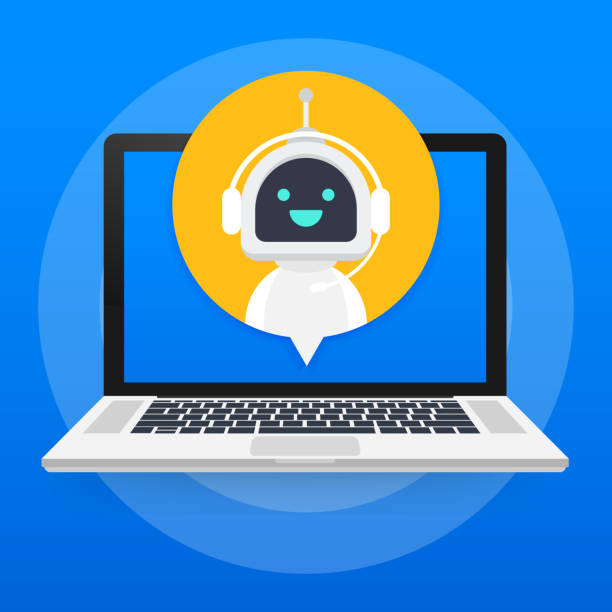
Chatbots as Lead Generation Tools
Chatbots are virtual assistants that can engage in real-time conversations with website visitors. They can answer frequently asked questions, provide recommendations, and even make product suggestions based on customer preferences. But their capabilities extend beyond just providing customer support – chatbots are also highly effective lead generation tools.
One of the primary advantages of using chatbots as lead generation tools is their ability to engage site visitors. Unlike traditional lead generation forms that can be tedious and time-consuming, chatbots offer a more interactive and conversational experience. By engaging visitors in personalized conversations, chatbots can capture their attention and keep them on your website for longer periods.
Furthermore, chatbots can gather valuable information from visitors that can be used to identify and qualify potential leads. Through carefully crafted questions, chatbots can collect data such as contact information, preferences, and buying intentions. This data can then be used to segment visitors and target them with personalized marketing campaigns, ultimately increasing conversion rates.
Chatbots can also enhance the website’s conversion rate by guiding visitors through the sales funnel. By providing tailored recommendations and offers, chatbots can nudge visitors towards making a purchase or taking the desired action. They can provide product information, assist with the selection process, and even offer discounts or incentives to entice visitors to convert.
Moreover, chatbots can seamlessly integrate with other marketing tools and platforms, such as email marketing software or customer relationship management systems. This integration allows businesses to automate lead nurturing processes and ensure that no potential lead falls through the cracks.
In conclusion, chatbots have proven to be invaluable tools for lead generation and customer engagement. By leveraging the power of artificial intelligence and automation, businesses can enhance their marketing efforts, generate more leads, and increase conversions. As the market becomes more competitive, harnessing the potential of chatbots will become a crucial aspect of any successful marketing strategy. Whether you are in the home service industry, sports, or any other niche, incorporating chatbot marketing into your business can help you better engage with your target customers and achieve your goals.
Improving Conversion Rates with Chatbot Marketing
In today’s fast-paced digital landscape, businesses are constantly seeking innovative ways to engage with their customers and ultimately increase conversions. One powerful tool that has emerged in recent years is chatbot marketing. By leveraging the capabilities of artificial intelligence and automation, businesses can enhance user engagement, generate more leads, and ultimately boost their website’s conversion rate. In this subchapter, we will explore how chatbots can revolutionize your marketing strategy and help you achieve unprecedented success.
First and foremost, chatbots provide a unique opportunity to engage with your target audience conversationally and interactively. Gone are the days of static web forms and one-way communication. With chatbot marketing, you can create personalized experiences for your website visitors, guiding them through their buying journey and addressing their specific needs and concerns. By engaging users in real-time conversations, you can establish trust, build relationships, and ultimately convert them into loyal customers.
Moreover, chatbots are highly effective in lead generation. By proactively engaging with website visitors, chatbots can gather valuable information about their preferences, needs, and pain points. Armed with this data, businesses can segment their audience and deliver personalized marketing campaigns that resonate with their ideal potential customers. This targeted approach not only increases the chances of conversion but also enhances customer satisfaction and loyalty.
Furthermore, chatbots can significantly improve customer service and support. With the ability to provide immediate responses and assistance, chatbots can address customer inquiries and resolve issues in a timely manner. This not only saves valuable time and resources but also enhances the overall customer experience. Satisfied customers are more likely to convert and become brand advocates, leading to increased sales and revenue.
In addition to these benefits, chatbot marketing enables businesses to automate various processes, thereby increasing efficiency and productivity. By automating repetitive tasks such as lead qualification, appointment scheduling, and order processing, businesses can focus their resources on more strategic activities. This streamlined approach not only saves time and money but also ensures a consistent and seamless user experience.
Using Chatbots to Nurture Leads and Drive Sales
In today’s fast-paced digital world, businesses need to find innovative ways to engage with their target audience and drive sales. One powerful tool that has emerged in recent years is chatbot marketing. Chatbots, powered by artificial intelligence and automation, have revolutionized the way businesses interact with their customers, generating leads and enhancing sales in the process.
Chatbot marketing offers a unique opportunity to engage with website visitors in real-time, providing them with personalized assistance and information. By leveraging the power of conversational advertising, businesses can capture the attention of their target customers and guide them through the sales funnel. Chatbots can be programmed to ask qualifying questions, understand customer preferences, and recommend suitable products or services, thereby nurturing leads and increasing the likelihood of conversions.
One of the key advantages of using chatbots in lead generation is their ability to provide instant responses to customer inquiries. With chatbots, businesses no longer have to worry about delayed responses or missed opportunities. Chatbots can be available 24/7, providing round-the-clock support and assistance to potential customers. This not only enhances customer satisfaction but also increases the chances of converting leads into sales.
Moreover, chatbots can be integrated seamlessly into various platforms, including websites, social media, and messaging apps, allowing businesses to reach their target audience wherever they are. By engaging site visitors through chatbot conversations, businesses can gather valuable insights about their ideal potential customers, their preferences, and pain points. This data can then be used to tailor marketing strategies, create personalized offers, and improve the overall customer experience.
Another advantage of chatbot marketing is its ability to enhance a website’s conversion rate. Chatbots can proactively engage with website visitors, offering assistance and guiding them towards making a purchase. By providing relevant information and personalized recommendations, chatbots can help potential customers make informed decisions and overcome any objections they may have. This not only increases the chances of conversion but also improves the overall user experience.
Implementing Chatbot Marketing for Different Niches
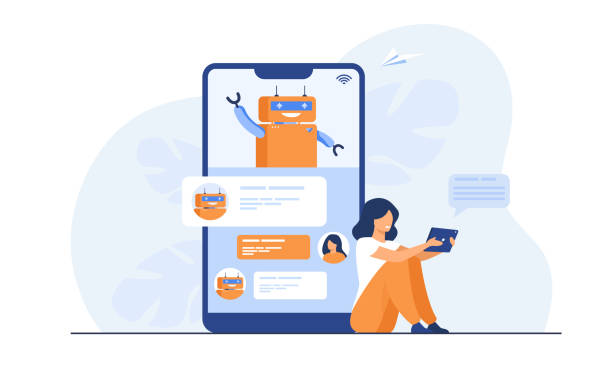
Chatbot Marketing for Home Service Businesses
One of the key advantages of chatbot marketing for home service businesses is its ability to provide immediate and round-the-clock customer support. With a chatbot, businesses can address customer inquiries, provide information about services, and even schedule appointments, all in real-time. This enhances customer satisfaction and helps to build trust and loyalty among clients.
Moreover, chatbots can be programmed to engage site visitors in conversational advertising. By analyzing user behavior and preferences, chatbots can recommend relevant services or products, increasing the chances of conversions. This personalized approach not only enhances the customer experience but also boosts the website’s conversion rate.
Lead generation is another area where chatbots excel. By engaging with website visitors and collecting valuable information, chatbots can identify ideal potential customers and capture their contact details. This enables businesses to nurture these leads and convert them into paying customers, ultimately increasing sales and revenue.
For home service businesses, chatbots can also play a crucial role in managing customer service. By automating routine tasks such as scheduling appointments or providing basic troubleshooting assistance, chatbots free up human resources, allowing staff to focus on more complex issues. This improves efficiency and ensures a prompt response to customer inquiries, leading to higher customer satisfaction.
In addition to these benefits, chatbots can also be integrated with social media platforms and messaging apps, allowing businesses to reach their target audience where they spend most of their time. By delivering personalized and relevant content, chatbots can effectively engage with potential customers, driving brand awareness and capturing new leads.
Chatbot Strategies for the Sports and Entertainment Industry
In today’s digital age, chatbots have emerged as powerful tools for businesses across various industries. The sports and entertainment industry is no exception. With their ability to engage customers, provide instant information, and enhance user experience, chatbots have become indispensable for organizations in this sector. In this subchapter, we will explore some effective chatbot strategies specifically tailored for the sports and entertainment industry.
1. Personalized Fan Experience
One of the key objectives for sports and entertainment businesses is to build a strong connection with their fans. Chatbots can play a crucial role in achieving this by offering personalized experiences. By analyzing user data, chatbots can provide tailored recommendations for upcoming events, merchandise, and exclusive offers, ensuring that fans feel valued and engaged.
2. Ticket Sales and Reservations
Chatbots can revolutionize the ticketing process by simplifying it for customers. By integrating with ticketing platforms, chatbots can handle ticket purchases, and seat reservations, and even provide real-time updates on availability. This not only streamlines the process but also enhances the overall customer experience.
3. Game Updates and News
Keeping fans informed about the latest game updates and news is vital for sports organizations. Chatbots can deliver real-time updates, match scores, player statistics, and other relevant information directly to fans’ devices. This ensures that fans stay engaged and connected, even if they are unable to attend the event in person.
4. Interactive Game Previews
Chatbots can create interactive game previews to generate excitement and anticipation among fans. By providing sneak peeks, behind-the-scenes footage, and player interviews, chatbots can build anticipation and increase ticket sales.
5. Virtual Assistants for Athletes and Celebrities
Athletes and celebrities often receive a high volume of inquiries and requests from fans. Chatbots can act as virtual assistants, filtering and responding to these messages, ensuring that genuine inquiries are addressed promptly. This not only saves time for athletes and celebrities but also enhances the overall fan experience.
6. Engaging Content Delivery
Chatbots can deliver engaging content such as quizzes, polls, and trivia related to sports and entertainment. This not only keeps fans entertained but also provides valuable insights into their preferences and interests, helping businesses tailor their offerings accordingly.
Chatbot Marketing for E-commerce and Online Retail
Chatbot marketing offers a unique opportunity for e-commerce businesses to provide personalized and real-time support to their customers. By utilizing artificial intelligence and automation, chatbots can engage with website visitors, answer customer inquiries, and offer tailored product recommendations. This not only enhances the overall customer experience but also increases the chances of converting website visitors into paying customers.
One of the key advantages of chatbot marketing for e-commerce and online retail is its ability to generate leads. By engaging with site visitors in a conversational manner, chatbots can collect valuable customer information and qualify leads. This data can then be utilized to target potential customers with personalized marketing campaigns, resulting in higher conversion rates and increased sales.
Moreover, chatbots can assist e-commerce businesses in enhancing their sales by providing proactive and timely customer support. Chatbots can offer product suggestions, notify customers about ongoing promotions or discounts, and even facilitate the checkout process. These functionalities not only streamline the customer journey but also contribute to a more personalized and seamless shopping experience.
Furthermore, chatbots can play a crucial role in targeting ideal potential customers. By analyzing customer interactions and preferences, chatbots can gather valuable insights that can be utilized to identify and target the most relevant audience segments. This targeted approach allows e-commerce businesses to maximize their marketing efforts and achieve higher returns on investment.
Best Practices for Effective Chatbot Marketing
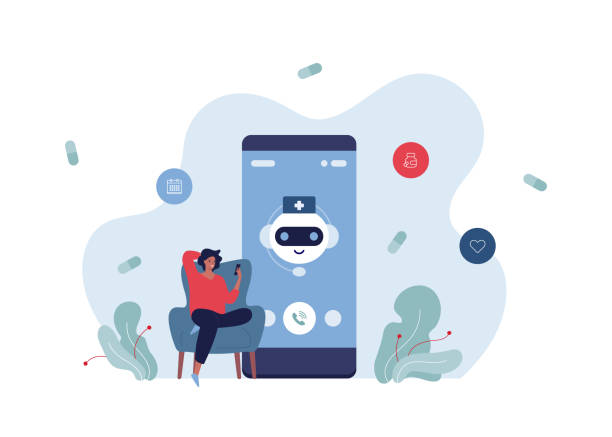
Targeting the Right Audience with Chatbots
One of the key benefits of chatbots is their ability to provide instant and personalized responses to customer inquiries. By analyzing user behavior and preferences, chatbots can tailor their interactions to meet the specific needs of each individual. This level of personalization not only enhances the user experience but also increases the chances of converting leads into sales. For example, a sports chatbot can recommend the most suitable sporting events or products based on a user’s interests, leading to higher conversion rates.
In order to effectively target the right audience with chatbots, it is crucial to understand your ideal potential customers. By analyzing demographic data, consumer behavior, and market trends, businesses can identify their target market and create chatbot experiences that resonate with them. For instance, a home service chatbot can be programmed to offer personalized recommendations based on a user’s location, budget, and specific requirements.
Furthermore, chatbots can play a vital role in lead generation by capturing valuable customer information. By integrating chatbots with lead capture forms or CRM systems, businesses can collect relevant data such as email addresses, phone numbers, and preferences. This data can then be used to nurture leads and tailor marketing campaigns to specific audience segments, resulting in higher engagement and conversions.
It is worth noting that chatbots should be seamlessly integrated into a website’s conversion rate optimization strategy.
By strategically placing chatbots on high-traffic pages or exit-intent pop-ups, businesses can engage with potential customers at the right moment, preventing them from leaving the website without taking any action. This proactive approach not only improves user engagement but also enhances the website’s conversion rate.
Designing Engaging Chatbot Conversations
In the fast-paced world of digital marketing, chatbots have emerged as powerful tools for enhancing user engagement and increasing conversions. To leverage the full potential of chatbot marketing, it is crucial to design conversations that are not only informative but also engaging for your target audience. This subchapter will guide you through the process of creating chatbot conversations that captivate website visitors, generate leads, and enhance sales.
- Understanding your target audience: Before designing chatbot conversations, it is essential to have a deep understanding of your target market. Research their preferences, pain points, and communication styles to create conversations that resonate with them.
- Personalization: Tailoring chatbot conversations to individual users can significantly boost engagement. Use data-driven insights to personalize greetings, recommendations, and responses, making users feel valued and understood.
- Natural language processing: Incorporating natural language processing capabilities into your chatbot allows for more human-like interactions. This enables users to have more fluid and realistic conversations, enhancing engagement and building trust.
- Conversational flow: Designing a logical and intuitive flow for your chatbot conversations is crucial. Ensure that users can easily navigate through different topics or queries and receive relevant information or assistance at each step.
- Visual elements: Integrate visual elements such as images, videos, and GIFs into your chatbot conversations to make them visually appealing and interactive. Visual content can help convey information more effectively and keep users engaged.
- Interactive features: Incorporate interactive features like clickable buttons, quick replies, and quizzes to make the conversation more dynamic and engaging. This allows users to actively participate and provides them with a sense of control over the conversation.
- Emotion and personality: Infusing your chatbot with a touch of personality and emotion can make conversations more relatable and engaging. Use humor, empathy, and appropriate tone to create a conversational experience that resonates with your audience.
- Continuous improvement: Monitor and analyze chatbot conversations regularly to identify areas for improvement. Use feedback from users to refine the conversation design, making it more engaging and effective over time.
By implementing these strategies, you can design chatbot conversations that not only provide valuable information and assistance but also captivate your target audience.
Integrating Chatbots with Other Marketing Channels
However, to truly maximize the potential of chatbot marketing, it is crucial to integrate these bots with other marketing channels. By doing so, businesses can create a seamless and consistent customer experience across all touchpoints, enhancing user engagement and boosting conversions.
One of the key benefits of integrating chatbots with other marketing channels is the ability to capture leads and generate more sales. By strategically placing chatbots on websites, social media platforms, and even email campaigns, businesses can proactively engage with their target audience and guide them through the customer journey. Chatbots can ask qualifying questions, offer personalized recommendations, and provide real-time assistance, ultimately increasing the likelihood of converting website visitors into paying customers.
Moreover, integrating chatbots with feedback and customer support channels allows businesses to streamline their customer service processes. Chatbots can handle common customer inquiries and provide instant responses, freeing up human agents to focus on more complex issues. This not only improves response times but also enhances overall customer satisfaction, leading to increased brand loyalty and repeat business.
Another way chatbots can improve user engagement and conversions is through conversational advertising. By leveraging the power of AI and natural language processing, chatbots can engage in personalized conversations with potential customers, gathering valuable information and understanding their needs. This data can then be used to deliver targeted advertisements and offers, significantly improving conversion rates and ROI.
Furthermore, chatbots can be integrated with home service platforms, allowing customers to book appointments, track orders, and receive real-time updates. This not only enhances the overall customer experience but also streamlines the business’s operations, leading to improved efficiency and customer satisfaction.
Measuring Success and Evaluating ROI in Chatbot Marketing

Key Metrics for Assessing Chatbot Performance
In the world of chatbot marketing, it is crucial to continuously assess the performance of your chatbot to ensure its effectiveness in engaging users and driving conversions. By monitoring key metrics, you can gain valuable insights into how your chatbot is performing and make informed decisions to optimize its performance. In this blo, we will explore the key metrics that can help you assess your chatbot’s performance and drive success in your automation efforts.
1. Engagement Rate
The engagement rate measures the level of interaction users have with your chatbot. It reflects the effectiveness of your chatbot in capturing users’ attention and keeping them engaged. A high engagement rate indicates that your chatbot is successfully attracting users and delivering relevant and valuable information.
2. Conversion Rate
The conversion rate is a crucial metric that measures the percentage of users who take the desired action, such as making a purchase or submitting a lead form, after interacting with your chatbot. It indicates the effectiveness of your chatbot in driving conversions and achieving your marketing goals.
3. Response Time
Response time measures how quickly your chatbot responds to user inquiries. A fast response time is essential for providing a seamless user experience and ensuring customer satisfaction. Monitoring this metric allows you to identify any bottlenecks or areas for improvement in your chatbot’s performance.
4. Customer Satisfaction
Customer satisfaction is a key metric for assessing the overall effectiveness of your chatbot in delivering a positive user experience. It can be measured through user feedback and ratings. By monitoring customer satisfaction, you can identify any pain points and make necessary adjustments to enhance the performance of your chatbot.
5. Retention Rate
The retention rate measures the percentage of users who continue to engage with your chatbot over time. A high retention rate indicates that users find value in your chatbot and are likely to become repeat customers. Monitoring this metric allows you to identify strategies to improve user retention and maximize the long-term impact of your chatbot.
6. Lead Generation
If lead generation is one of your primary objectives, measuring the number of qualified leads generated by your chatbot is essential. This metric helps you assess the effectiveness of your chatbot in attracting and nurturing potential customers, allowing you to fine-tune your lead generation strategies.
By tracking and analyzing these key metrics, you can gain valuable insights into your chatbot’s performance and make data-driven decisions to optimize its effectiveness. Remember, chatbot marketing is an ongoing process, and continuous monitoring and improvement are essential for achieving success in engaging users and driving conversions.
Tracking and Analyzing Chatbot Conversions
One of the most significant advantages of using chatbots in marketing is the ability to track and analyze conversions. By monitoring and measuring the effectiveness of your chatbot interactions, you can gain valuable insights into user engagement and conversion rates. This subchapter will provide you with actionable strategies and tools to optimize your chatbot marketing efforts.
To begin tracking chatbot conversions, it is crucial to define the desired action or goal you want users to take. Whether it’s completing a purchase, signing up for a newsletter, or requesting more information, clearly defining your conversion goals will help you measure success accurately.
There are several metrics you can use to track and analyze chatbot conversions. The first is the conversion rate, which measures the percentage of users who complete the desired action. By comparing conversion rates across different chatbot interactions, you can identify which conversations are most effective in driving conversions.
Furthermore, tracking customer inquiries and engagement levels can provide insights into user behavior and preferences. Analyzing the type of questions asked by users can help you identify potential pain points or areas for improvement in your chatbot’s responses. By addressing these issues, you can enhance the user experience and increase conversion rates.
To track and analyze chatbot conversions effectively, you can utilize various tools and technologies. Chatbot analytics platforms, such as Engagerbot, offer comprehensive insights into user behavior, conversation flow, and conversion rates. These tools provide real-time data and visualizations that allow you to monitor performance and make data-driven decisions.
Additionally, integrating your chatbot with a customer relationship management (CRM) system can provide valuable data on lead generation and customer interactions. By syncing chatbot data with your CRM, you can track the entire customer journey and gain a holistic view of your marketing efforts.
Evaluating Return on Investment (ROI) for Chatbot Marketing
When it comes to chatbot marketing, it is important to evaluate the return on investment (ROI) to determine the effectiveness and success of your chatbot strategy. ROI allows you to measure the value and impact of your chatbot efforts, helping you make informed decisions and optimize your marketing campaigns. In this subchapter, we will explore the key aspects of evaluating ROI for chatbot marketing and how it can improve user engagement and conversions.
Firstly, it is essential to define clear objectives and goals for your chatbot marketing campaign. Whether it’s increasing user engagement, generating leads, or enhancing sales, having specific targets will enable you to measure and track the ROI effectively. By aligning your chatbot strategy with your business objectives, you can better understand the impact it has on your desired outcomes.
Secondly, tracking key performance indicators (KPIs) is crucial for evaluating ROI. KPIs such as conversion rates, customer inquiries, and website’s conversion rate can provide valuable insights into the effectiveness of your chatbot marketing. By regularly monitoring these metrics, you can identify areas for improvement and make data-driven decisions to optimize your chatbot’s performance.
Furthermore, segmenting your audience and analyzing their behavior can provide deeper insights into the ROI of your chatbot marketing. Understanding your target customers and their preferences allows you to tailor your chatbot interactions to meet their needs, ultimately driving higher engagement and conversions. By utilizing customer feedback and analyzing user data, you can continuously improve your chatbot’s effectiveness and ROI.
In addition to evaluating ROI based on quantitative data, it is important to consider the qualitative aspects as well. Gathering feedback from users and customers can provide valuable insights into their experience with the chatbot. Understanding their satisfaction levels, pain points, and suggestions can help you make necessary adjustments and improvements to enhance user engagement and conversions.
Ultimately, evaluating ROI for chatbot marketing requires a comprehensive analysis of both quantitative and qualitative data. By setting clear objectives, tracking KPIs, segmenting the audience, and gathering feedback, you can measure the success of your chatbot marketing initiatives. This evaluation process enables you to make data-driven decisions, optimize your chatbot strategy, and ultimately increase user engagement and conversions on your website.
Future Trends and Innovations in Chatbot Marketing

Advancements in Artificial Intelligence and Automation
One of the most significant advancements in AI and automation is the development of chatbot technology. Chatbots are computer programs designed to simulate human conversation and interact with users. They can provide instant responses to customer inquiries, offer personalized recommendations, and guide users through the sales process. Chatbots have become an indispensable tool for businesses looking to enhance customer service and engagement.
Through AI-powered chatbots, businesses can automate customer support processes, reducing response times and improving customer satisfaction. These chatbots can handle a wide range of customer inquiries, from simple FAQs to complex troubleshooting, freeing up human agents to focus on more critical tasks. This automation of processes not only saves time and resources but also ensures consistent and accurate responses to customer queries.
Furthermore, chatbots can be used to generate leads and increase sales. By engaging site visitors in conversational advertising, chatbots can capture user information and qualify leads. They can provide personalized product recommendations based on user preferences, increasing the chances of conversion.
AI-powered chatbots can also identify ideal potential customers and target them with tailored marketing messages, further enhancing the conversion rates.
The advancements in AI and automation have also benefited the home service industry. Chatbots can streamline the booking process, schedule appointments, and provide real-time updates to customers. This automation of processes not only improves customer satisfaction but also enhances efficiency and reduces human errors.
Chatbots and Voice Assistants: A Synergistic Approach
In today’s digital era, chatbots and voice assistants have become integral tools for businesses looking to enhance user engagement and boost conversions. The combination of these two technologies creates a powerful synergy that can revolutionize the way companies interact with their target market. This subchapter explores the benefits and strategies of using chatbots and voice assistants in a harmonious approach.
- Enhancing User Engagement: Chatbots and voice assistants are designed to provide personalized and interactive experiences for users. By incorporating conversational AI, businesses can engage with their customers in real-time, offering instant assistance and information. This level of engagement creates a sense of trust and reliability, leading to increased customer loyalty and satisfaction.
- Increasing Conversions: The ultimate goal of any marketing strategy is to convert prospects into paying customers. Chatbots and voice assistants play a critical role in this process by guiding users through the sales funnel. By offering proactive suggestions, answering inquiries, and providing relevant information, these technologies can significantly improve conversion rates and drive sales.
- Streamlining Customer Support: Customer support is an essential aspect of any business, and chatbots and voice assistants can streamline this process. By automating repetitive tasks and providing instant support, these technologies can handle a large volume of customer inquiries simultaneously, reducing response times and improving overall customer satisfaction.
- Generating Leads: Chatbots and voice assistants can be leveraged as powerful lead generation tools. By engaging with website visitors, they can collect valuable user information, such as contact details and preferences. This data can be used to identify ideal potential customers and nurture them through personalized marketing campaigns, ultimately increasing the chances of conversion.
- Targeted Marketing: With the ability to analyze user data and preferences, chatbots and voice assistants enable businesses to tailor their marketing efforts to specific target markets. By understanding customer needs and preferences, companies can deliver highly targeted and relevant content, resulting in improved engagement and higher conversion rates.
Predictions for the Future of Chatbot Marketing
As we look ahead to the future of chatbot marketing, it’s clear that this technology has the potential to revolutionize the way businesses engage with their customers. With advancements in artificial intelligence and automation, chatbots are becoming smarter, more versatile, and capable of delivering personalized experiences like never before.
Here are some predictions for the future of chatbot marketing:
- Increased Personalization: Chatbots will continue to evolve and become more adept at understanding customer preferences and delivering tailored recommendations. Through advanced AI algorithms, chatbots will be able to analyze user behavior, purchase history, and demographic information to provide personalized product suggestions and offers.
- Seamless Integration with E-commerce: Chatbots will play a significant role in enhancing the customer shopping experience. E-commerce businesses will leverage chatbots to guide users through the entire purchase journey, from product discovery to checkout. Chatbots will be able to answer product-related queries, provide real-time inventory updates, and even facilitate secure transactions within the chat interface.
- Enhanced Customer Support: Chatbots are already being used to handle customer inquiries and provide instant support. In the future, chatbots will become even more sophisticated, capable of understanding complex queries and providing accurate solutions. They will be able to handle a wider range of customer interactions, reducing the need for human intervention and improving response times.
- Conversational Advertising: Chatbots will offer new opportunities for conversational advertising. Brands will be able to engage with their target audience in more interactive and personalized ways through chatbot-powered ad campaigns. Users will have the option to interact with chatbots to learn more about products, request samples, or receive exclusive offers.
- Integration with Voice Assistants: With the increasing popularity of voice assistants like Siri and Alexa, chatbots will seamlessly integrate with these platforms. Users will be able to engage with chatbots through voice commands, making the experience more intuitive and convenient.
- Improved Lead Generation and Conversion Rates: Chatbots will become invaluable tools for lead generation and conversion optimization. By engaging website visitors in real-time conversations, chatbots will capture valuable contact information and qualify leads. They will also guide users through the sales funnel, offering personalized recommendations and incentives to increase conversions.
- Expansion to New Industries: While chatbots are already being utilized in various industries, their adoption will continue to expand. From home services to sports, chatbots will find applications in niche markets, offering customized solutions and improving user engagement.
Final Thoughts on Achieving Success with Chatbots
Chatbot marketing has proven to be a game-changer for businesses across various industries. By leveraging the power of automation, artificial intelligence, and personalized communication, chatbots can enhance user engagement, generate leads, and increase conversions.
As technology continues to evolve, it is crucial for businesses to stay updated and adapt their chatbot strategies accordingly. By embracing this innovative tool, you can gain a competitive edge and propel your business towards success in the digital age.
Get Life Time Accessibility to Engagerbot Chatbot Software Program.
Our Chatbot Software Program Integrates With Your Advertising and Marketing Automation Service..
Please see our website, Engagerbot, to get more information.
